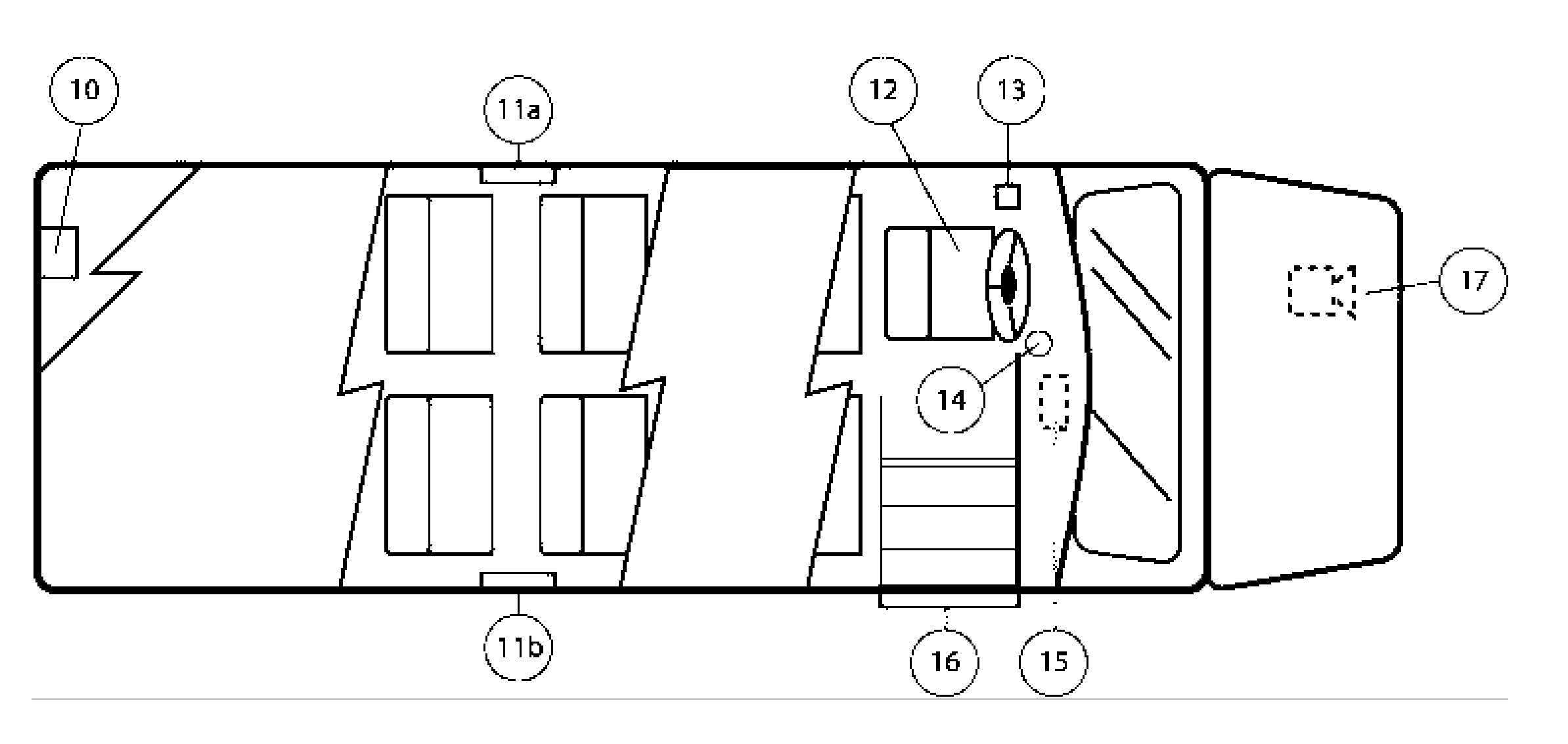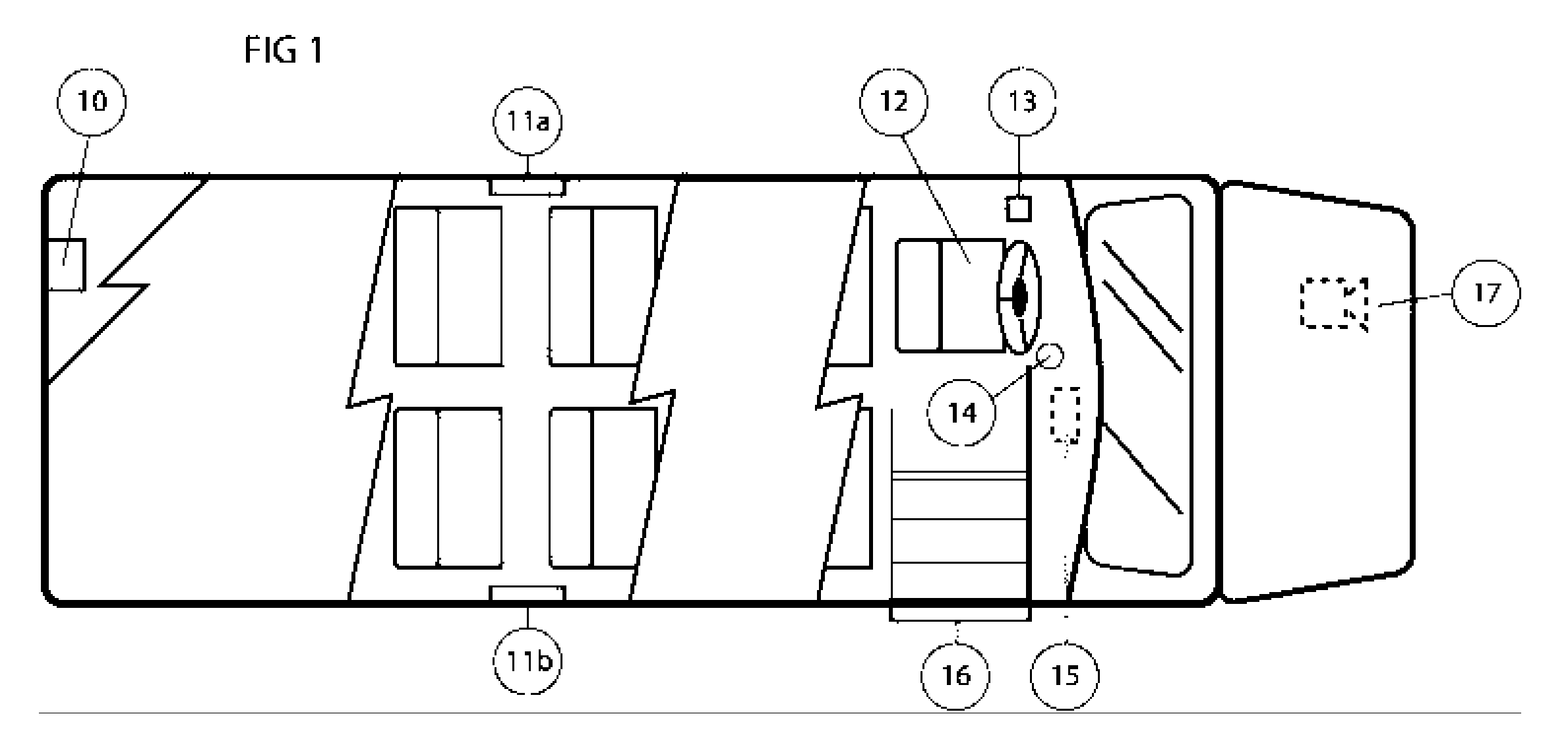Children have perished from excessive heat and have suffered
hypothermia in excessive cold.
These unfortunate occurrences have also resulted in lawsuits filed by parents, and countless drivers of many years experience being fired.
An audible or visual alarm system which sounds when the bus ignition is turned off is not sufficient.
Moreover, these types of alarms typically sound the
vehicle horn if the driver has not walked to the back of the bus within 30 to 60 seconds after shutting off the ignition.
This timing method distracts the driver during their visual sweep because the horn will begin honking if they do not reach the back of the bus quickly.
In addition, drivers can walk a considerable distance from their bus before the horn will sound.
There have been a number of children left on school buses protected by this type of system because of this fundamental flaw.
Every type of alarm system on the market today suffers from a common problem;
mechanics disable them during service work because it is inconvenient to keep walking to the back of the bus.
However, the override keys typically end up in the hands of the drivers themselves within days of installation of the system, rendering it useless.
This creates a serious problem because most school buses are used for field trips, athletic events, and other runs where there are children onboard but the warning lights are not used.
These types of systems would not provide any protection in such cases.
Even a system that would arm by using the
brake pedal or other device on the bus would not be effective because it would either inconvenience the
mechanics or would require some specific action to be taken by the driver to arm the system.
Disabled systems are a serious concern to
school bus operators.
Many of them are installing alarm systems in their fleets in an effort to make sure drivers check their buses for sleeping children, only to find the systems are not functioning because they have been unplugged or disabled.
Another problem is caused by poor
visibility inside the vehicle.
Attempts in the prior art to design such a system have failed on the key points outlined above and would not satisfy the aspect of providing
mechanics a grace period, a speed activated system, or a simple, quick means for verifying that the system is functional.
None of these references provides a means to
delay the arming of the system until after the ignition has been in the on position for a set period of time to give mechanics enough time to bring the bus from its parking location to the service bay.
None of these references provides a means to
delay arming of the system until after the vehicle has reached a pre-determined speed, thus allowing mechanics to shuttle buses around the
parking lot at below traffic speeds.
None of these references provides a means for simple, quick
verification that the system is functioning and has not been disabled.
None of these references provides means for illuminating the interior of the vehicle to help the driver see in and under the seats.
None of these references provides means for disabling deactivation means at the rear of the vehicle if the system has entered the
alarm state.
Heckart is deficient because it effects the armed state if the
pupil loading door has been opened.
Most mechanics open these
doors during service work, which would arm the system and cause mechanics to get frustrated and disable the system.
Rogers is deficient because it arms immediately if the ignition is turned on, and would definitely be a major inconvenience for
service personnel.
Rogers attempts to compensate for this inconvenience with an override key, but as mentioned earlier, such keys end up in the hands of the drivers rending the system useless.
Lowe is deficient because it not only disarms with the ignition in the on position, giving children the opportunity to press the deactivator for the driver, it also only arms if the warning lights have been used, providing no protection on field trips, athletic runs, or other trips where the warning lights are not used.
 Login to View More
Login to View More  Login to View More
Login to View More 

